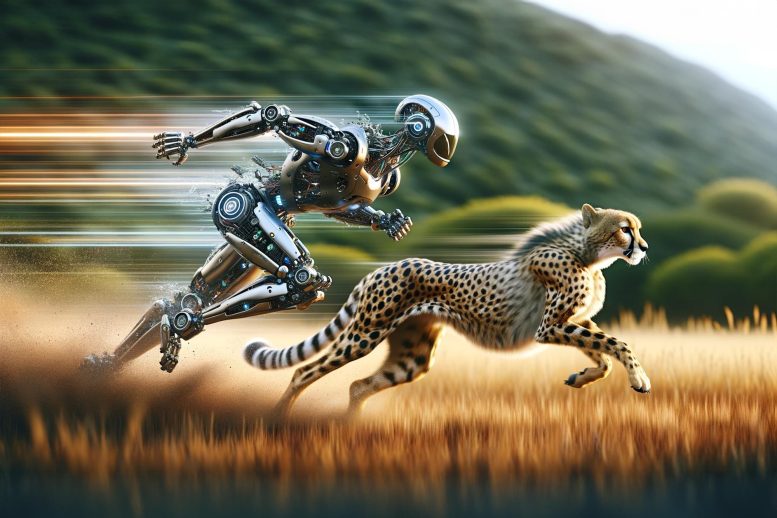
A study reveals that engineered components in robots frequently surpass biological equivalents, but animals outperform robots in overall system functionality, pointing to integration as the key area for robotics improvement. Credit: SciTechDaily.com
Despite superior individual components, robots lag behind animals in overall performance, suggesting a future focus on better system integration and control in robotics.
Robotics engineers have worked for decades and invested many millions of research dollars in attempts to create a robot that can walk or run as well as an animal. And yet, it remains the case that many animals are capable of feats that would be impossible for robots that exist today.
“A wildebeest can migrate for thousands of kilometers over rough terrain, a mountain goat can climb up a literal cliff, finding footholds that don’t even seem to be there, and cockroaches can lose a leg and not slow down,” says Dr. Max Donelan, Professor in Simon Fraser University’s Department of Biomedical Physiology and Kinesiology. “We have no robots capable of anything like this endurance, agility, and robustness.”
Comparing Robots to Animals
To understand why, and quantify how, robots lag behind animals, an interdisciplinary team of scientists and engineers from leading research universities completed a detailed study of various aspects of running robots, comparing them with their equivalents in animals, for a paper published in Science Robotics. The paper finds that, by the metrics engineers use, biological components performed surprisingly poorly compared to fabricated parts. Where animals excel, though, is in their integration and control of those components.
Alongside Donelan, the team comprised Drs. Sam Burden, Associate Professor in the Department of Electrical & Computer Engineering at the SciTechDaily